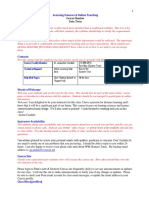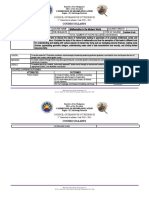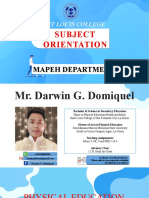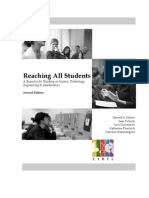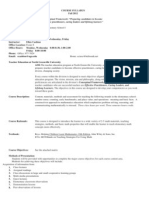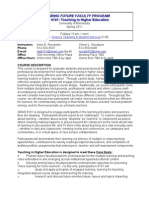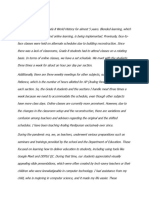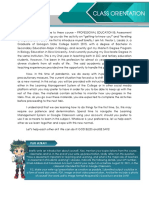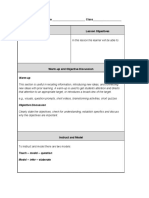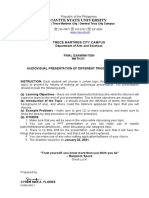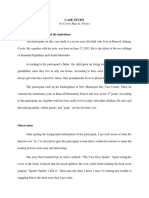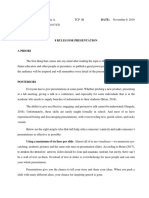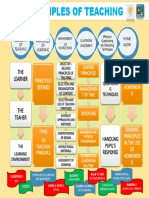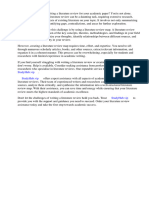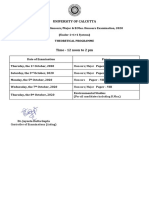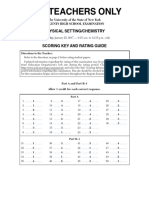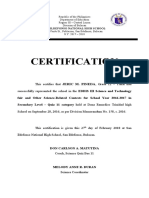0% found this document useful (0 votes)
70 views6 pagesWEEK 1 - Module
This document provides an instructional and learning module for the course Mathematics in the Modern World at Cavite State University.
The course aims to help students appreciate mathematics beyond formulas by exploring its practical applications, intellectual dimensions, and aesthetic qualities. Topics include personal finance, social choices, geometric designs, coding, and fair resource allocation.
The module outlines activities for course orientation week, including introducing the instructor and students, discussing the university vision and course overview, and establishing online classroom policies and platforms. It defines key terms like remote learning and synchronous/asynchronous learning and provides netiquette guidelines for online classes.
Uploaded by
Cyren Mae Abestado FloresCopyright
© © All Rights Reserved
We take content rights seriously. If you suspect this is your content, claim it here.
Available Formats
Download as DOCX, PDF, TXT or read online on Scribd
0% found this document useful (0 votes)
70 views6 pagesWEEK 1 - Module
This document provides an instructional and learning module for the course Mathematics in the Modern World at Cavite State University.
The course aims to help students appreciate mathematics beyond formulas by exploring its practical applications, intellectual dimensions, and aesthetic qualities. Topics include personal finance, social choices, geometric designs, coding, and fair resource allocation.
The module outlines activities for course orientation week, including introducing the instructor and students, discussing the university vision and course overview, and establishing online classroom policies and platforms. It defines key terms like remote learning and synchronous/asynchronous learning and provides netiquette guidelines for online classes.
Uploaded by
Cyren Mae Abestado FloresCopyright
© © All Rights Reserved
We take content rights seriously. If you suspect this is your content, claim it here.
Available Formats
Download as DOCX, PDF, TXT or read online on Scribd
/ 6

